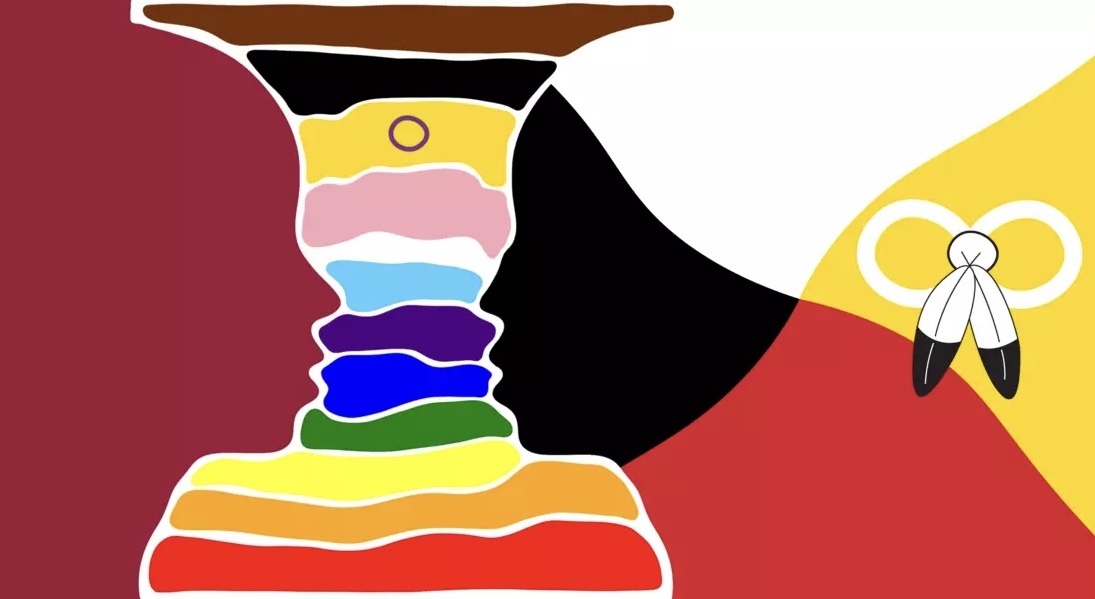
New webpage by the Office of Equity, Diversity and Inclusion combines resources to deepen understanding of the LGBTQ2S+ community
By Andreea Timis, September 11 2024—
This year, the University of Calgary’s Office of Equity, Diversity and Inclusion (OEDI) launched a webpage to enhance awareness and broaden knowledge and understanding of LGBTQ2S+ rights, histories, experiences and contributions across Canada.
As of 2022, approximately one million people in Canada aged 15 or older identify as LGBTQ2S+ – which represents about four per cent of the Canadian population. Within this percentage, about 52 per cent are women, 44 per cent are men and three per cent are non-binary.
The webpage features resources such as histories and archives, books, films and podcasts by LGBTQ2S+ Canadians as well as available supports on campus. The image on the webpage was crafted to represent the inclusivity, diversity and intersectionality of the LGBTQ2S+ community.
The Gauntlet spoke with Dr. Malinda Smith — the vice provost, associate vice president research and office head of OEDI — and Tracy Garrick, the OEDI’s coordinator of programs and operations, about the inspiration behind the website’s creation.
“The inspiration actually was the work that we started on dimensions, equity, diversity and inclusion. So we had an Equitable Pathways group for each equity deserving group, including LGBTQ2S+,” Smith said. “What we learned with that group was that this was one of the areas [that] was less visible in terms of the supports on campus or the work that’s been done to advance equity. And so from that initiative, it was clear that people wanted to see more.”
Smith also emphasized that inspiration for the webpage arose from the work and research conducted by previously unrecognized campus members in this area since the 1960s. As of 2018, LGBTQ2S+ individuals aged 35 to 44 make up only 15 per cent of the Canadian LGBTQ2S+ population, while age groups 45 to 54, 55 to 64 and 65+ make up only 10.1 per cent, 9.2 per cent and 7.3 per cent respectively.
“[These members] weren’t very visible,” Smith explained. “So people often think that the work that’s being done is relatively new. And so this site, in a way, pays homage [and] recognizes the longstanding contributions of the community. [And another] reason would be [that] it’s a necessary education resource for our campus community.”
Smith and Garrick delved a little deeper into the website’s features, including the template used for its creation, which is consistent with the Black history, Asian heritage, Jewish heritage and Islamic heritage pages.
“It is actually the fifth major site development we have done at the university and it is to raise awareness. It is to provide easy access to supports and services on campus. So it’s an educational resource. It provides a history not just of Calgary and Alberta, but of efforts at U of C.”
Smith and Garrick added that the website development was supported by an OEDI
graduate student intern, Molly Clare. The site has received positive feedback not just from people at the U of C, but from across Alberta and Canada. Garrick spoke about an experience where a student reached out to express their gratitude for the site and how it helped facilitate their transition to U of C.
“[The student] found [the website] very informative and they’ve actually made some connections already, even before they got to campus,” Garrick explained. “So that to me is what warms the heart, that even if it affects just one individual, we’ve been able to provide some resources to make their time at the university a much better one, so that they can focus on their academic path and not have to worry.”
When asked about the impact of the website’s creation on the student community, Smith highlighted that the site is a source of visibility and recognition and underscores the role of student advocacy in creating an able environment.
“So it’s not just senior leadership or the administration that makes campus a welcome one,” she said. “Students have been historically and continue to be involved. So it’s a recognition of the contributions of students.”
Additionally, the website benefits incoming students by creating a safe space in terms of student groups and the wider community. Many of these groups exist also to protect student rights and to offer protection from any discrimination or harassment.
Finally, the website acts as a beacon for visibility so that no students feel underrepresented or as though they need to hide who they are.
Garrick further stressed the importance of forming connections between students to reduce on-campus anxieties.
“I think the most important thing is that we allow [students] the opportunity for connection with each other, and with their peers, colleagues, mentors,” she said. “It’s a big campus, and it can be scary and intimidating, and having those connections in those areas where you can do it … at your own time [and] pace.”
More information is available on the OEDI’s new webpage and main page. Students can also reach out to the OEDI team at equity@ucalgary.ca for support and further questions.
